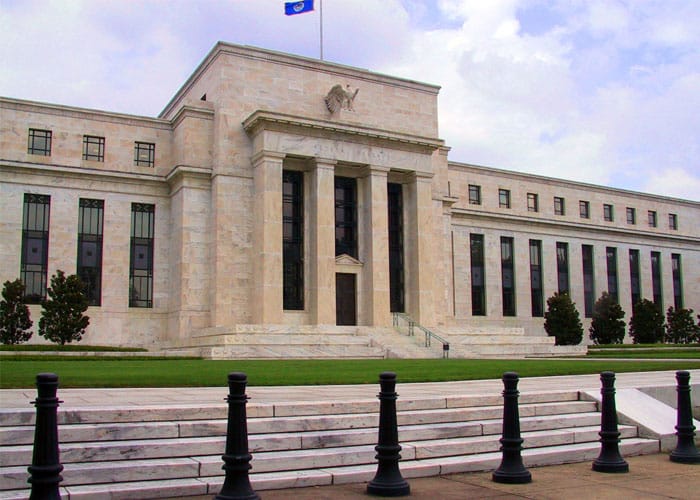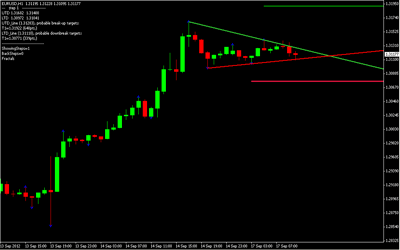
In the last part of this series, we looked at the different types of monetary policy, and the reasons why central banks and governments adopt different types of strategies. Today, we shall go into a little more detail on the topics of inflation and interest rates.
Inflation
From a market analysis perspective, the important thing to remember about inflation is that central banks tend to have a target in mind for the rate of inflation, for example 2%. Although they might not make this explicit, it is nonetheless in evidence, and all of their efforts in terms of monetary policy are intended to get inflation to within a comfort zone around this target number.
In small, measured doses, inflation can be a good thing, but if it gets out of hand it can reduce people’s spending power to the extent that they lose faith in the economy, their jobs, and their money. By setting targets for inflation levels, central bankers can help market participants to understand what they are doing – and are likely to do – in order to deal with the current economic situation.
For example, during January 2010, the level of inflation in the UK rose by 0.6% to 3.5% inside a month, taking the inflation rate far beyond the Bank of England’s nominal target rate of 2%. In response, then-Bank of England governor Mervyn King followed up the report with a statement reassuring the public that the jump was caused by temporary factors, and that the rate would fall without much interference from the central bank.
Whether this turned out to be the case or not is immaterial – what is important is that the market does better when it knows why the central bank is (or isn’t) doing something with regards to its target rate of inflation. This is because traders, economies, and central banks like stability. The knowledge that these inflation targets do in fact exist can help a trader to understand the actions of central banks.
Policy Cycles
One of the most important things to remember when considering monetary policy is that it never changes very dramatically, as this would cause huge market turmoil. That’s why the vast majority of policy changes made by central banks are of the small, incremental variety – typically 0.25% to 1% at a time – in order to promote price stability. In part, this stability comes as a result of the time it takes to make significant monetary policy changes – often a matter of months or even years.
In the same way that traders have to collect and evaluate data in order to decide on their next trading decision, central bankers have to do the same, but with the whole economy in mind rather than just a single trade. Raising the interest rates could be considered to be like putting the brakes on the economy, while cutting them could be likened to hitting the accelerator.
That being said, it’s worth remembering that businesses and consumers tend to react fairly slowly to these changes. In many cases, the time lag between a monetary policy adjustment being enacted and it having a tangible effect on the economy can be as long as one or two years.
Other articles in this series:
Forex Trading Fundamental Analysis Masterclass Part 1
Forex Trading Fundamental Analysis Masterclass Part 2
Forex Trading Fundamental Analysis Masterclass Part 3
Forex Trading Fundamental Analysis Masterclass Part 4
Forex Trading Fundamental Analysis Masterclass Part 5
Forex Trading Fundamental Analysis Masterclass Part 6
Forex Trading Fundamental Analysis Masterclass Part 7
Forex Trading Fundamental Analysis Masterclass Part 8
Forex Trading Fundamental Analysis Masterclass Part 9
Forex Trading Fundamental Analysis Masterclass Part 10
Forex Trading Fundamental Analysis Masterclass Part 11
Forex Trading Fundamental Analysis Masterclass Part 12
Forex Trading Fundamental Analysis Masterclass Part 13
Forex Trading Fundamental Analysis Masterclass Part 14
Forex Trading Fundamental Analysis Masterclass Part 15
José Ricaurte Jaén is a professional trader and Guest Editor / community manager for tradersdna and its forum. With a Project Management Certification from FSU – Panama, José develops regularly in-house automated strategies for active traders and “know how” practices to maximize algo-trading opportunities. José’s background experience is in trading and investing, international management, marketing / communications, web, publishing and content working in initiatives with financial companies and non-profit organizations.
He has been working as senior Sales Trader of Guardian Trust FX, where he creates and manages multiple trading strategies for private and institutional investors. He worked also with FXStreet, FXDD Malta, ILQ, Saxo Bank, Markets.com and AVA FX as money manager and introducing broker.
Recently José Ricaurte has been creating, and co-managing a new trading academy in #LATAM.
During 2008 and 2012, he managed web / online marketing global plan of action for broker dealers in Panama. He created unique content and trading ideas for regional newspaper like Capital Financiero (Panamá), La República (Costa Rica), Sala de Inversión América (Latinoamérica) and co-developed financial TV segments with Capital TV.
He is a guest lecturer at Universidad Latina and Universidad Interamericana de Panamá an active speaker in conferences and other educational events and workshops in the region. José Ricaurte worked and collaborated with people such as Dustin Pass, Tom Flora, Orion Trust Services (Belize) and Principia Financial Group.









































